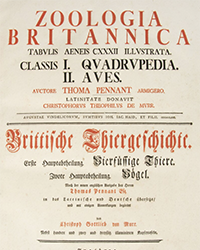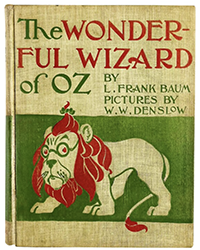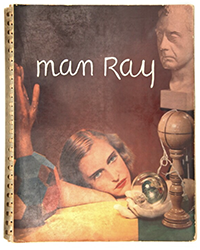David M. Lesser Fine Antiquarian Books has issued their Catalogue 208 of Rare Americana. Books range through three centuries, from Colonial times to the second half of the twentieth century. However, the bulk of the material is from the late 18th and 19th centuries. It was the period where America broke free, grew into a great nation, split itself apart, and then began a gradual healing process, a process that continues to this day. There may even been some regression in that healing over the past few years, but America is a resilient land. Here are a few of the items being offered.
On the evening of December 26, 1811, America had its “first great disaster.” It was a fire at the Richmond Theater in Richmond, Virginia. It was built on the site of a previous Richmond Theater that also was destroyed by fire, but without the loss of life. This second fire killed 72 of the almost 600 people attending. Among those who died were the Governor and a former senator. The fire began between acts when a lit chandelier was raised toward the ceiling. The flames spread to the various sets behind the stage and other combustible materials. The patrons were not immediately aware as the fire was spreading behind the drawn curtain. It spread rapidly. With their being two balconies above the floor, and narrow doorways, they could not exit quickly enough. Some jumped from windows as it was their only escape. Item 103 is a hand-colored ink drawing of the fire, likely the original drawing for an aquatint lithograph of the scene. The drawing contains great detail, with people leaping from windows while flames shoot from the building. The horror can be seen on the faces of some of those making their escape. Two strikes proved to be enough, so while another Richmond Theater was built, a church which also serves as a memorial was built on the earlier site. That church, the Monumental Church, still stands today. Many of the fire victims are buried in a crypt beneath it. Priced at $1,500.
North Carolina adopted a new constitution after the Civil War, and it was a progressive document for its day. Many of its provisions affirm rights also granted by the U. S. Constitution. It provides for equal voting rights for all races (though not all genders) - “All the male inhabitants of the State, without regard to race, color, or previous condition” have the right to vote and hold office. Statements from the Declaration of Independence, such as “all men are created equal,” are part of the North Carolina Constitution though not part of the U.S. Constitution. Item 73 is a publication headed To the People of North Carolina explaining as well as presenting the words of the new constitution. It points out, perhaps necessary to get people to approve of the constitution, that while it provides equal voting rights, it does not provide social equality. The publication rebuts the claim that it “favors the social equality of the races. It is untrue. With the social intercourse of life, government has nothing to do; that must be left to the taste and choice of each individual...Some people have been so bold or so ignorant as to allege, that white people and colored people, are required to be enrolled in the same militia company, and white and colored children to attend the same schools, and that intermarriage between the races are encouraged. All these assertions are false, as any reader of the Constitution will see.” $1,500.
The Caryl Chessman conviction was a major legal case in mid-twentieth century America. Chessman engaged in numerous crimes but the one that led to his celebrity and international support was a conviction for kidnapping. In California in 1949, kidnapping with bodily harm could get you the death penalty. It was extremely rare that such nonlethal kidnappings, or any other non-lethal crime resulted in the death penalty sentence, and there have been none in America in 60 years. The death penalty sentence for Chessman's crime was repealed long before his execution, but that law was not made retroactive. Chessman proved to be a smart and determined advocate for himself. He filed appeal after appeal in California's courts. Convicted in 1949, his execution was postponed eight times. Today, executions can be delayed for decades, but that was not the case in his time. Public sympathy swelled over the years for Chessman. He became an international cause. Chessman wrote four books about his life. Supporters for commutation included Eleanor Roosevelt, Billy Graham, Robert Frost and Marlon Brando. Ultimately, all the appeals failed and Chessman was executed in 1960, though his case led many to reconsider the death penalty. Item 17 is Plaintiff and Respondent vs. Caryl Chessman, Defendant and Appellant. Crim 5006. It is an appeal to the Supreme Court of California in 1958. $500.
Next is an archive of 53 press photographs of Theodore Roosevelt, from his presidency and times thereafter. He is seen at his inauguration, various cities he visited, with Commodore Peary, at his African exhibit in the Smithsonian, on a battleship, at a Rough Riders reunion, with foreign and American leaders as well as entertaining army men, horseback riding from Laramie to Cheyenne, with a locomotive engineer, with his children, and in John Paul Jones funeral cortege in Annapolis. Wait a minute. Jones died in the 18th century. How was T.R. at his funeral cortege? The answer is Jones was buried in an unmarked grave in France whose location was unknown. His remains were finally found in 1906 and were removed for burial in America. There are also later photographs of Roosevelt's widow. Item 89. $1,250.
Would you prefer press photographs of a different Roosevelt? Item 88 is such an archive of 25 photographs of Franklin Roosevelt. They go back to 1920 when Roosevelt was the vice-presidential nominee on the Democratic ticket. He is seen shaking hands with presidential nominee James Cox. Roosevelt was standing tall, not yet stricken with the polio that would soon take away so much of his strength. We later see him with knee braces, with his mother, reading congratulatory messages on being elected, asking for a declaration of war, addressing a crowd from the back of a train, on his 1937 western trip, reporting to Congress on the Yalta Conference, with Eleanor and his cabinet, in his study in Hyde Park, and returning from Warm Springs. $500.
David M. Lesser Fine Antiquarian Books may be reached at 203-389-8111 or dmlesser@lesserbooks.com. Their website is www.lesserbooks.com.


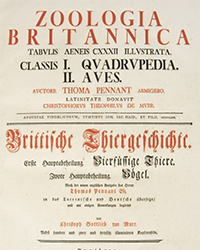
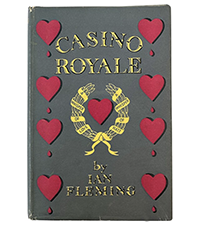
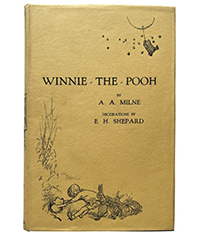
![<b>Sotheby’s:</b> Ernest Hemingway. <i>Three Stories And Ten Poems,</i> [Paris], (1923). First edition of Hemingway’s first published book. $75,000. <b>Sotheby’s:</b> Ernest Hemingway. <i>Three Stories And Ten Poems,</i> [Paris], (1923). First edition of Hemingway’s first published book. $75,000.](https://ae-files.s3.amazonaws.com/AdvertisementPhotos/acf970a0-a15d-4c79-aa24-5e8e414cb465.png)
